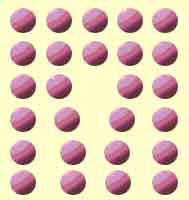 |
|
| Slip and dislocations |
|
 Picture 1 Dislocations The lattice structure naturally contains many defects, that is, missing ions in layers. When a force is placed on the steel, dislocations move through the lattice structure. Unlike slip, only a relatively few number of ions need to move, not an entire layer. See Picture 2. Together, dislocation and slip account for malleability and ductility of steel.  Picture 2 Coarse grained steel contains fewer grains and grain boundaries than fine grained steel with many more grains and boundaries. Because of this, fine-grained steel has the potential to be stronger and more ductile than coarse grained steel. Often times, elements like vanadium are added to the mixture of steel to provide nuclei around which grains can grow. The objective of this process is to produce finer grained steel, and vanadium is well known for its ability to assist in the control of grain size. |
